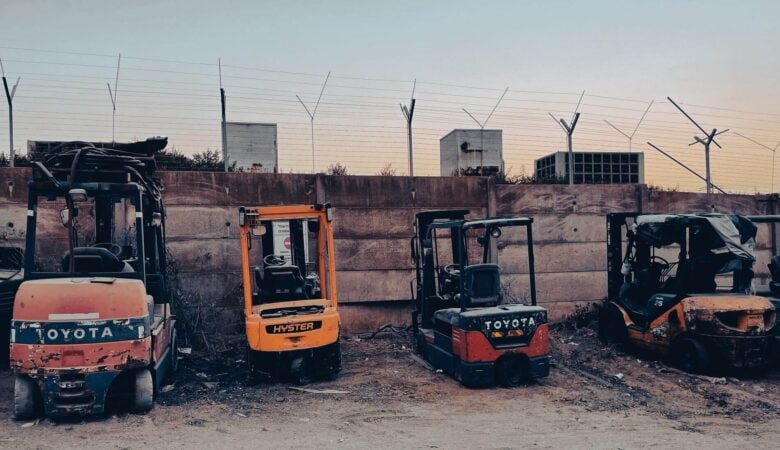One of the things we’ve come to learn over the years with regards to flatbed trucking is that there’s no ‘one-size-fits-all’ solution for every kind of load. Just browse our inventory of truck tarps and you will see what we mean. Lumber requires one kind of tarp while the steel coil is better protected with another. The differences in load carrying and cargo control go beyond just tarps, though. There are even different types of flatbed trailer parts that carriers and drivers can choose from.

People with some flatbed experience tend to think of the standard flatbed trailer most often. This trailer is typically no more than 48 feet long with a bed that is between 4 and 5 feet off the ground. Standard flatbed trailers are suitable for all kinds of loads that do not qualify as wide or tall.
Carriers and drivers have several other flatbed trailer parts to work with:
1. Removable Goosenecks
Also known as RGNs, this flatbed trailer has removable goosenecks that allow them to drop down so that the front can be used as a ramp. It is a good trailer option for construction equipment.
2. Step Decks
Step-deck trailers have a lower deck to accommodate loads that are too tall to fit under standard overpasses. These trailers can be coupled with trailer loading ramps to allow construction equipment to be driven into place before being secured.
3. Side Kit Trailers
The side kit flatbed trailer is one with removable sides. The sides can be deployed for loads that would normally fit inside the width of a dry goods van, then removed again for loads that do not work well in confined spaces. They are very popular for transporting the steel.
4. Stretch Trailers
Stretch trailers are usually removable goosenecks with built-in extensions that can be deployed to carry extra-long loads.
5. Double Drops
A double drop trailer has higher decks at the front and rear and a lower deck in the center. Like step decks, they are ideal for loads that are otherwise too tall based on legal limits.
Each of these trailers can accommodate unique loads that do not fit well inside dry goods vans. But the cargo being hauled still has to be protected. That is where the different kinds of truck tarps come in.
Securing and Protecting Cargo
Truck tarps are just one component of a much larger system of cargo control and protection. State laws require truck drivers to properly secure their cargo prior to departing on a journey. Cargo must be routinely inspected to make sure it remains secure throughout. As for protection, it is up to drivers to make sure their cargo gets to its destination in good condition.
Truck tarps serve to provide the protection drivers need. A good, high-quality truck tarp will provide years of reliable service protecting cargo from road debris, sunlight, moisture, and other sources of potential damage. Yet maximum protection means choosing the right tarp for the right kind of load.
Mytee’s inventory includes every kind of truck tarp the flatbed trucker needs. We carry lumber tarps, steel tarps, coil tarps, and machinery tarps. We also offer smaller smoke tarps designed to protect cargo from exhaust stack soot. All our tarps are made with high-quality materials and to the most stringent standards.
Flatbed trucking is by no means a uniform enterprise. There are different kinds of trailers used to carry different types of loads, and a full range of truck tarps that drivers can deploy to protect those loads. Here at Mytee, we have all the truck tarps and cargo control supplies you will need. You’ll have to handle the trailers yourself.










